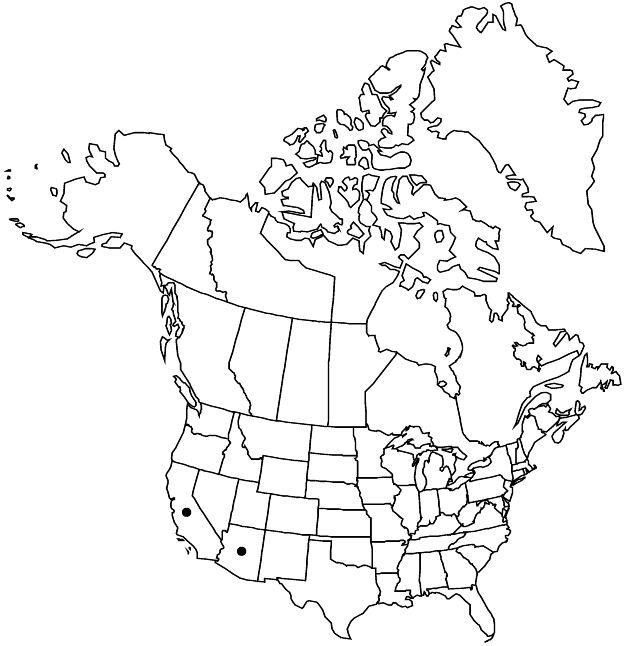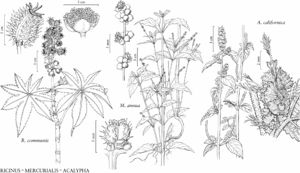Acalypha californica
Bot. Voy. Sulphur, 51. 1844.
Shrubs, 5–10 dm, monoecious. Stems erect, hirsute and stipitate-glandular, becoming glabrate. Leaves persistent or drought-deciduous; petiole 0.5–2.5 cm; blade ovate to cordate, 1–5 × 0.5–4 cm, base truncate to rounded or cordate, margins serrate-crenate, apex acute or obtuse. Inflorescences unisexual and bisexual, axillary and terminal; staminate peduncle 0.3–2.5 cm, fertile portion 1–4 cm; pistillate peduncle 0.4–3 cm, fertile portion 1–3 × 0.8–1.2 cm; bisexual similar to staminate, with 1–3 pistillate bracts near base; allomorphic pistillate flowers absent. Pistillate bracts loosely arranged (inflorescence axis visible between bracts), 3–6 × 5.5–11 mm, abaxial surface pubescent, sessile and stipitate-glandular; lobes (8–) 10–18, rounded, 1/5 bract length. Pistillate flowers: pistil 3-carpellate; styles multifid or laciniate. Capsules smooth, pubescent and stipitate-glandular. Seeds 1.5–2 mm, minutely pitted. 2n = 20.
Phenology: Flowering and fruiting year-round, especially spring and fall.
Habitat: Arid rocky slopes, desert washes.
Elevation: 10–1400 m.
Distribution

Ariz., Calif., Mexico (Baja California), Mexico (Baja California Sur), Mexico (Sinaloa), Mexico (Sonora)
Discussion
Plants in Arizona and Sonora have been segregated as Acalypha pringlei based on having long nonglandular hairs mixed with shorter hairs on the stem (versus hairs all of one length). This trait appears throughout the range of A. californica and cannot be used to distinguish two species (G. A. Levin 1995).
Selected References
None.
Lower Taxa
"elongated" is not a number."connate" is not a number. "distinct" is not a number.
